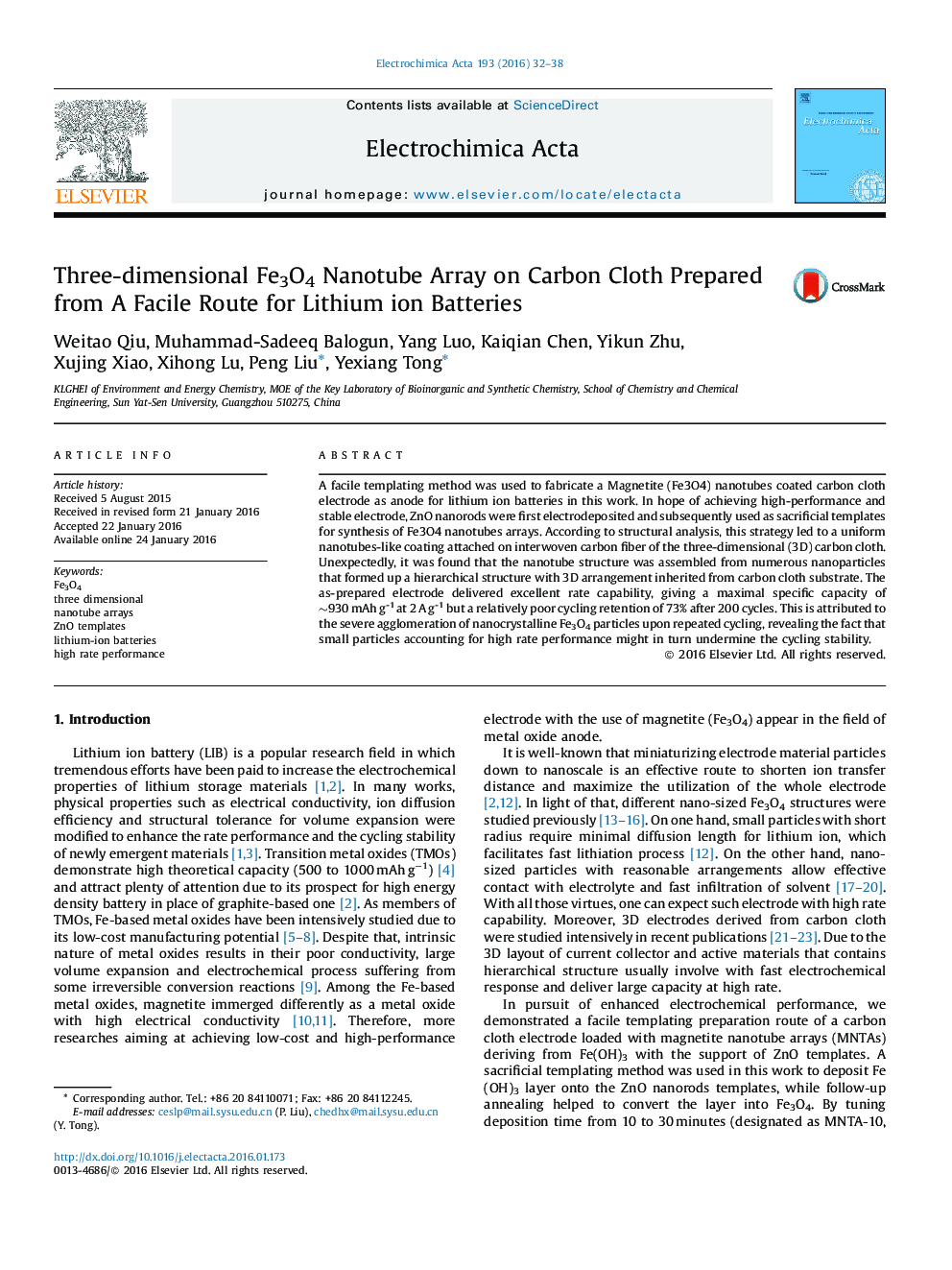| Article ID | Journal | Published Year | Pages | File Type |
|---|---|---|---|---|
| 183198 | Electrochimica Acta | 2016 | 7 Pages |
•Magnetite nanotube array with three dimensional arrangement were synthesized via a facile templating route.•Further investigation found out that the nanotubes were assembled from numerous nanoparticles.•Small particle sizes responsible for high rate performance led to agglomeration and undermine cycling stability.
A facile templating method was used to fabricate a Magnetite (Fe3O4) nanotubes coated carbon cloth electrode as anode for lithium ion batteries in this work. In hope of achieving high-performance and stable electrode, ZnO nanorods were first electrodeposited and subsequently used as sacrificial templates for synthesis of Fe3O4 nanotubes arrays. According to structural analysis, this strategy led to a uniform nanotubes-like coating attached on interwoven carbon fiber of the three-dimensional (3D) carbon cloth. Unexpectedly, it was found that the nanotube structure was assembled from numerous nanoparticles that formed up a hierarchical structure with 3D arrangement inherited from carbon cloth substrate. The as-prepared electrode delivered excellent rate capability, giving a maximal specific capacity of ∼930 mAh g-1 at 2 A g-1 but a relatively poor cycling retention of 73% after 200 cycles. This is attributed to the severe agglomeration of nanocrystalline Fe3O4 particles upon repeated cycling, revealing the fact that small particles accounting for high rate performance might in turn undermine the cycling stability.
